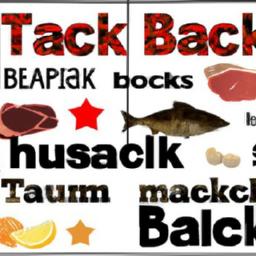
Understanding Umami: The Fifth Taste Sensation
Umami (pronounced u-MAH-mee) is recognized as one of the five fundamental taste sensations. It describes the rich, savory flavor commonly associated with protein-rich foods such as aged cheeses, soy sauce, mushrooms, and broths. This complex taste deepens the flavor profile of many dishes and is increasingly appreciated in both traditional and contemporary cooking.
Flour Varieties: Unbleached vs. Bleached
Unbleached flour refers to wheat flour that has not undergone chemical bleaching. This flour retains a natural off-white hue and richer flavor compared to its bleached counterpart, which has been treated to appear whiter and finer. Many artisan bakers prefer unbleached flour for its enhanced texture and flavor qualities.
Food Labeling: What Does Unsalted Mean?
The term unsalted on food packaging, as regulated by the U.S. Food and Drug Administration (FDA), indicates that the product is manufactured without the addition of salt, which is typically present in processed foods. Such items appeal to consumers seeking to manage their sodium intake for health reasons.
Distinctive Desserts: The Art of Upside-Down Cakes
An upside-down cake is a classic dessert where a layer of butter, sugar, and fruit-often pineapple or apples-is spread on the bottom of the pan before pouring in a light sponge batter. After baking, the cake is flipped, revealing a glossy, caramelized fruit topping. This method results in a visually striking and flavorful treat, a perfect example of creative baking techniques.
Exploring Vanilla: From Bean to Extract
The vanilla bean is the matured, dried pod of the vanilla orchid, primarily cultivated in tropical zones such as Madagascar and Tahiti. Packed with countless tiny black seeds, both the pod and seeds lend a unique, fragrant flavor to culinary creations.
Vanilla custard sauce, also known as crème anglaise, is a luxurious, stirred custard crafted from egg yolks, sugar, milk or cream, and infused with vanilla. This versatile sauce complements a range of desserts, from fruit tarts to chocolate cakes.
Vanilla extract is created by steeping chopped vanilla beans in a mixture of alcohol and water, extracting the deep flavor. Its quality is often indicated by the “fold” level, with higher-fold extracts delivering a richer taste. Pure vanilla extract adheres to strict standards, using approximately 13.35 ounces of vanilla beans per gallon, combined with at least 35% alcohol by volume.
For culinary convenience, vanilla flavoring blends natural vanilla extract with synthetic vanilla compounds, providing a cost-effective yet flavorful alternative. Another creative product is vanilla sugar, made by infusing granulated sugar with vanilla beans, perfect for baking or sweetening beverages. Meanwhile, vanillin refers both to the crystalline compounds that occasionally form on stored vanilla beans and to synthetic vanilla flavorings widely used in the food industry.
Meats and Dietary Choices: Veal, Venison, and Plant-Based Options
Veal is derived from young calves under nine months old, characterized by its pale pink color, delicate taste, and firm yet tender texture. It is prized in many cuisines for its subtle flavor and versatility.
Meanwhile, venison encompasses the meat from various members of the deer family, such as elk, moose, and white-tailed deer. Renowned for its deep red hue, low fat content, and distinctive sweet, earthy flavor, venison is a staple in gourmet and game cooking.
Vegetarians primarily consume plant-based foods, avoiding meat and fish, while vegans exclude all animal-derived products, including dairy, eggs, and honey. Both dietary groups emphasize the consumption of vegetables, which are the edible parts of plants such as roots, stems, leaves, tubers, and flowers. Vegetables are nutrient-rich, generally savory, and can be enjoyed raw or cooked. According to the latest USDA data, vegetables contribute significantly to vitamin, mineral, and fiber intake in balanced diets worldwide.
Classic French Sauces and Sensory Descriptions
Velouté sauce (pronounced veh-loo-TAY) is a foundational French sauce made by thickening a clear stock-veal, chicken, or fish-with a light roux, creating a smooth, golden-colored base used in numerous dishes. Known also as “blond sauce,” it exemplifies the elegance of French culinary technique.
The term velvety describes foods or beverages with a smooth, rich, and silky texture, often evoking indulgence and refinement in taste experiences.
Techniques, Ingredients, and Specialty Items
Vent has dual meanings in cooking: first, it refers to allowing steam or gases to escape from a cooking vessel to prevent pressure buildup; second, it describes the process of rapidly cooling a hot liquid by placing its container in a chilled water bath, promoting safe and efficient temperature reduction.
Vermicelli (from Italian meaning “little worms”) is a type of thin pasta resembling slender spaghetti strands. Available in both straight forms and twisted clusters, vermicelli is frequently incorporated in Mediterranean and Asian recipes alike.
Vermouth is a fortified white wine seasoned with an array of botanicals such as herbs, spices, and fruits. Containing at least 16% alcohol, vermouth serves as a key component in classic cocktails and as an aperitif.
The Vidalia onion is a distinct variety of sweet onion characterized by its pale yellow skin and juicy white interior, cultivated exclusively in a designated region around Vidalia, Georgia. Its mild flavor makes it popular in salads and grilling.
A vinaigrette is a simple yet versatile salad dressing achieved by emulsifying oil and vinegar with seasonings like herbs, salt, and pepper. This temporary mixture brightens vegetables and enhances flavors.
Vinegar derives from the French phrase “vin aigre,” meaning sour wine. It is produced through bacterial fermentation of alcoholic liquids such as wine, cider, or beer, resulting in a clear or tinted acidic solution. Vinegars vary greatly in flavor profiles and tonality depending on their base ingredients and any added infusions.
Vodka is a neutral distilled spirit typically produced from potatoes, corn, wheat, or other grains. It is usually distilled to 80-100 proof and may come in various flavored versions, making it a staple in bars worldwide.
Vol-au-vents are small, hollow puff pastry cases baked until golden and crisp. These elegant shells are filled with savory mixtures such as creamy mushroom ragout or seafood salad, serving as stylish appetizers or main course accompaniments.




